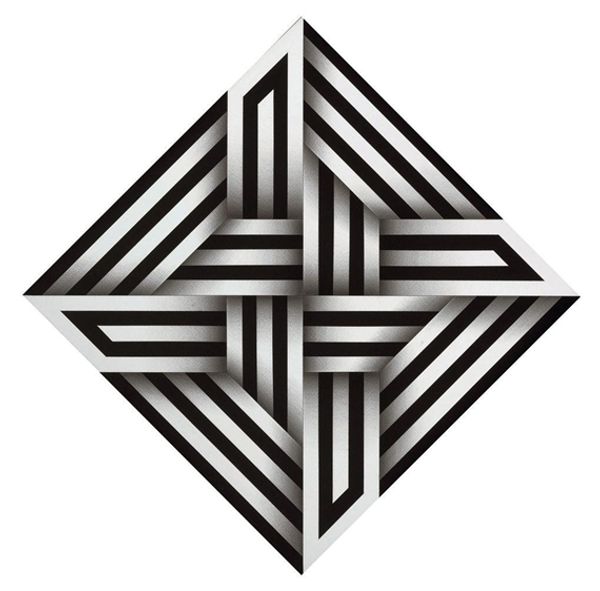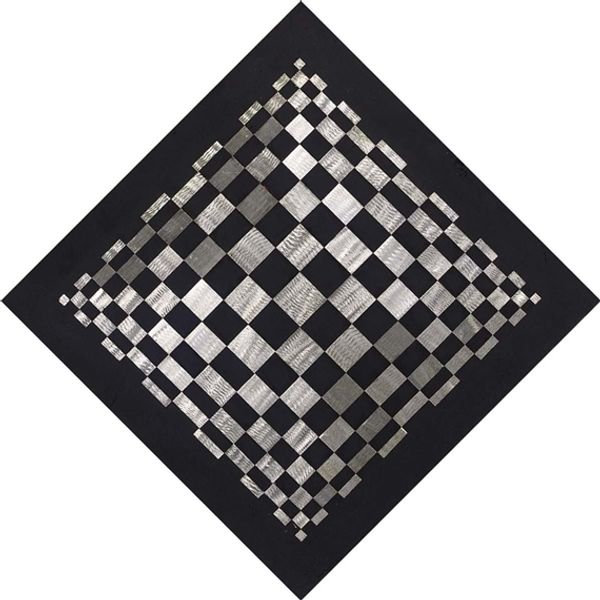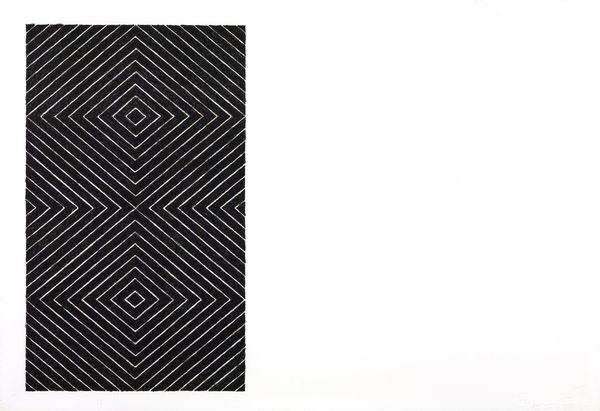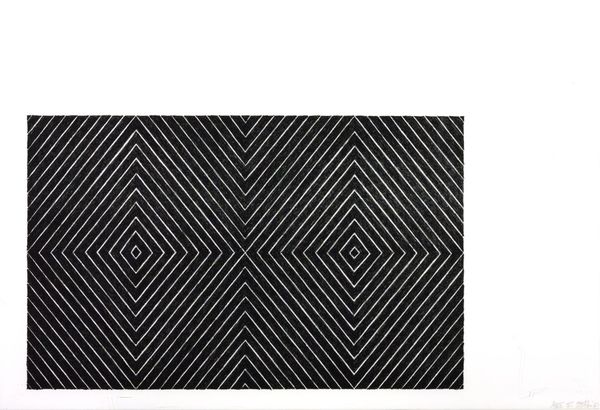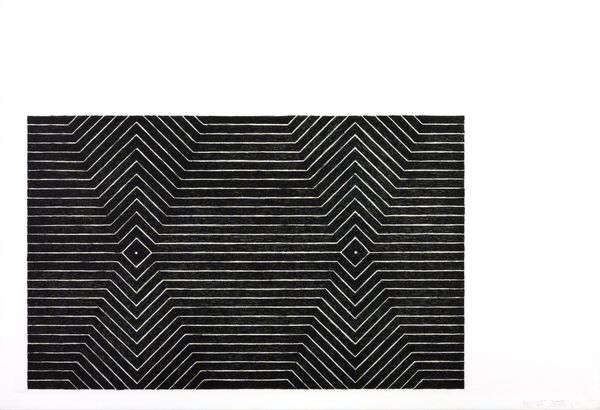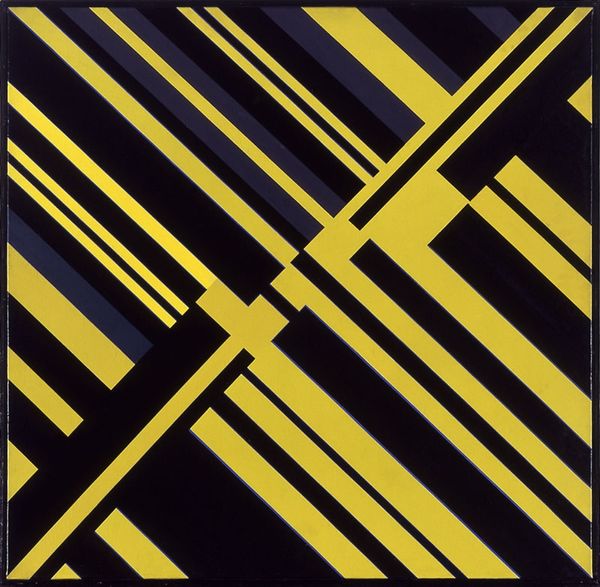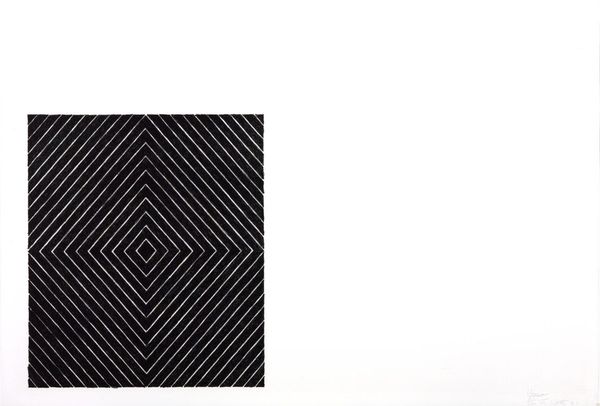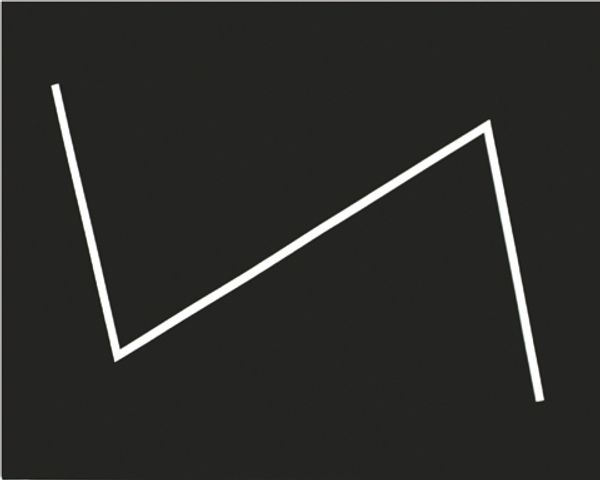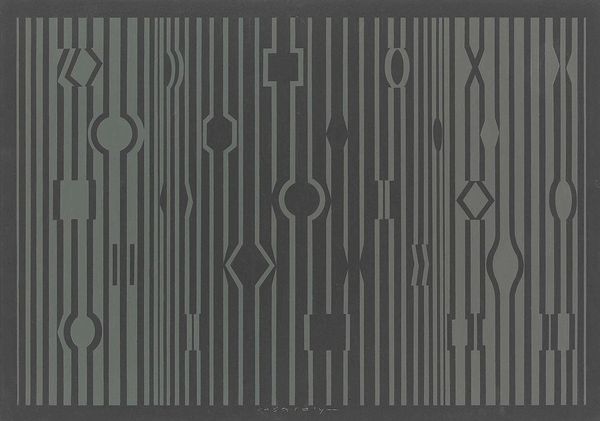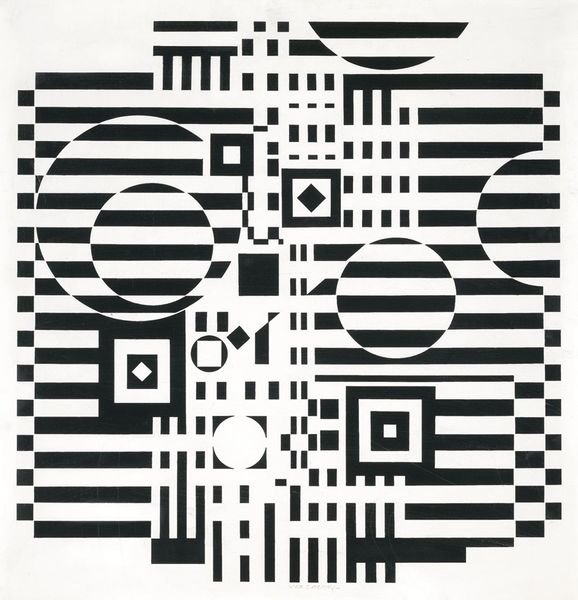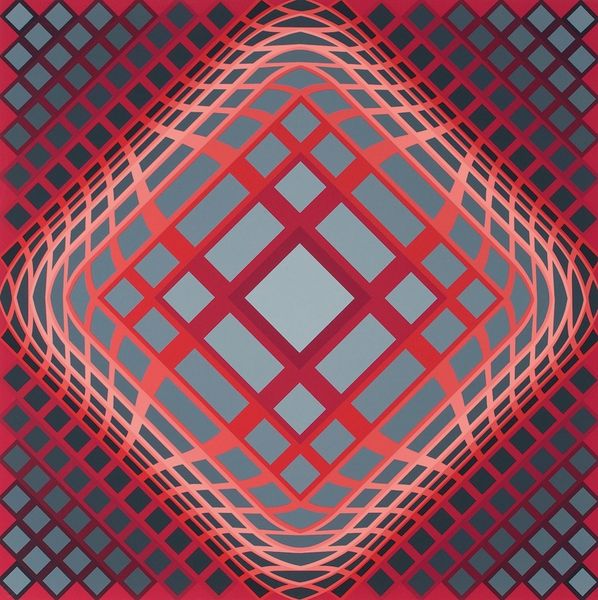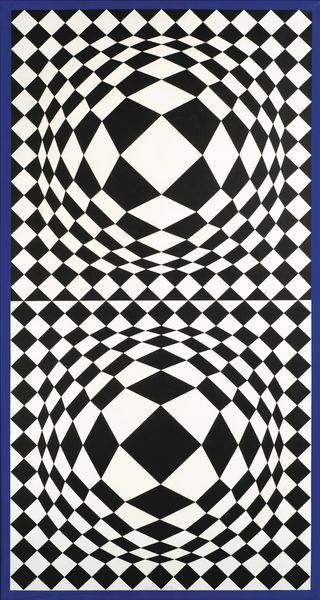
#
natural stone pattern
#
op-art
#
pattern
#
geometric pattern
#
repetitive shape and pattern
#
minimal pattern
#
geometric
#
geometric-abstraction
#
repetition of pattern
#
vertical pattern
#
abstraction
#
line
#
pattern repetition
#
layered pattern
#
combined pattern
#
repetitive pattern
Copyright: Omar Rayo,Fair Use
Curator: Standing before us is "Panche I" crafted in 1970 by Omar Rayo, a captivating example of Op Art. The artwork features geometric abstractions dominated by stark black and white contrasts. My initial thought is a feeling of precision and intentionality, an exploration of depth. What strikes you? Editor: It's immediately hypnotic, isn't it? The interplay of lines messes with your perception, almost creating a sense of disorientation. But it's more than just visual trickery. Curator: Precisely, Rayo’s artistic project often used hard-edge painting and intaglio techniques. His commitment was with abstract art with these eye-catching illusions which quickly became an expression and questioning of Latin American culture. Editor: Right. It's difficult to divorce abstraction from the social contexts in which they emerged. In Latin America during this time, there were movements toward modernizing the graphic languages of local culture; for instance, we may recall geometric motifs or pattern of weaving. This suggests Rayo could be participating in decolonization effort. Curator: That’s a keen insight. There is also a tension here, between what is presented as modern and forward-looking but with a clear artistic commitment to abstraction of shapes, colors and design with historical legacy in visual expression and art history more widely. The repetitive geometry is visually interesting. Editor: Definitely. But in what ways are visual tension an inherent political quality? Take the illusionary ribbon bisecting the design, how does this gesture suggest Rayo is experimenting or challenging traditional approaches to visual art? Curator: The tension perhaps stems from the rigid structure juxtaposed with that bending illusion which then disrupts and then emphasizes that underlying architecture of design in that field. Also, its material form plays a significant role too in reception. Editor: What about the symbolic importance? Is this meant to be destabilizing, or empowering? Curator: I would argue a bit of both. Optical illusions can be destabilizing; after all the idea is the art will prompt our own visual perceptual capacities. But also, in the context of cultural revolution that visual perceptual tension has also historically carried certain symbolic weight. Editor: Perhaps a reflection of a society caught between tradition and modernity, its patterns both constricting and creating potential. Overall, the artwork presents both possibilities and contradictions that still resonate strongly today. Curator: Indeed, it is difficult to imagine that its abstraction means it stands outside politics. Rather it encapsulates questions for cultural dialogue that the contemporary generation can engage with.
